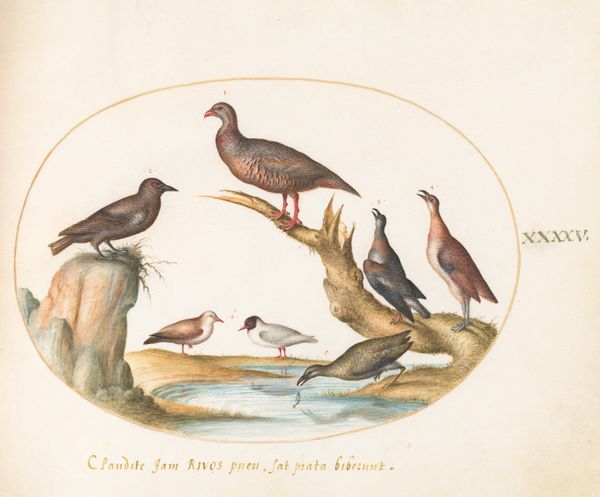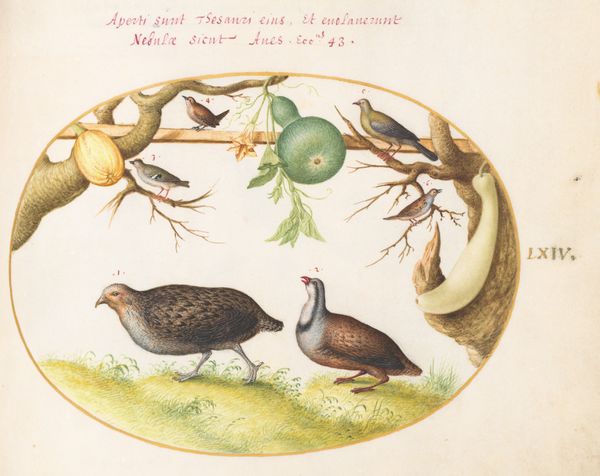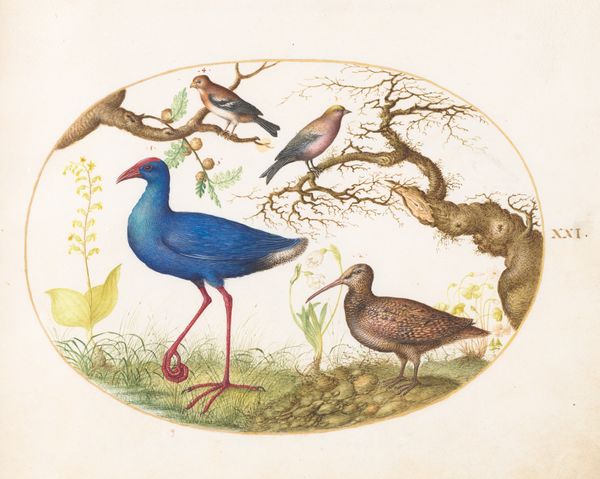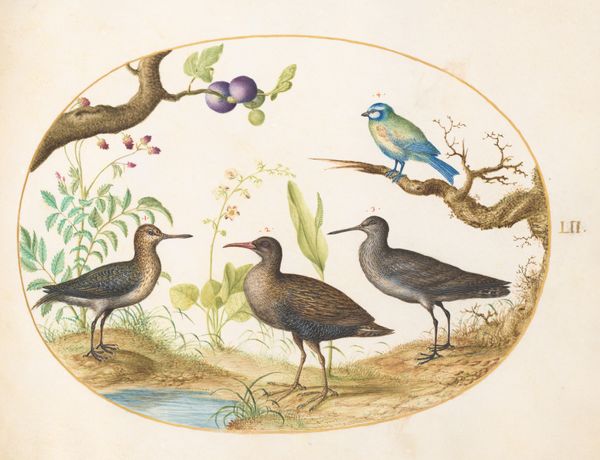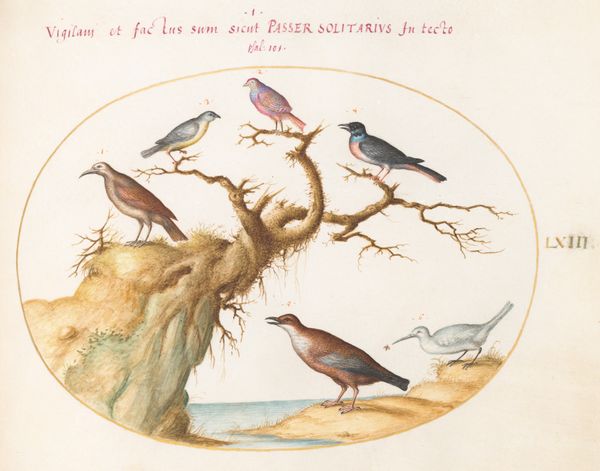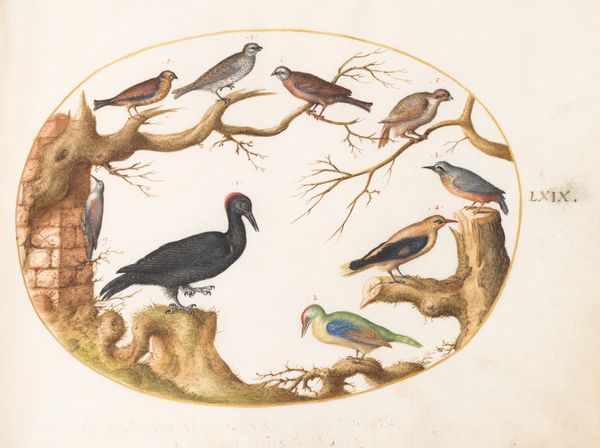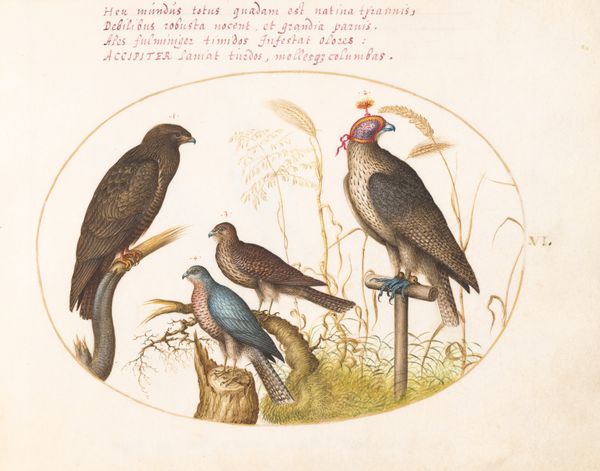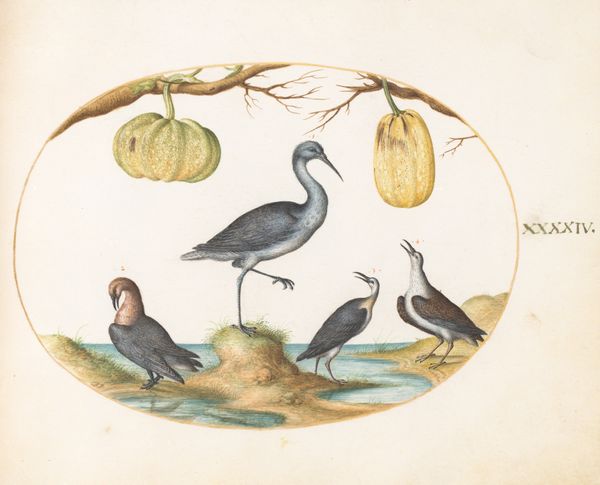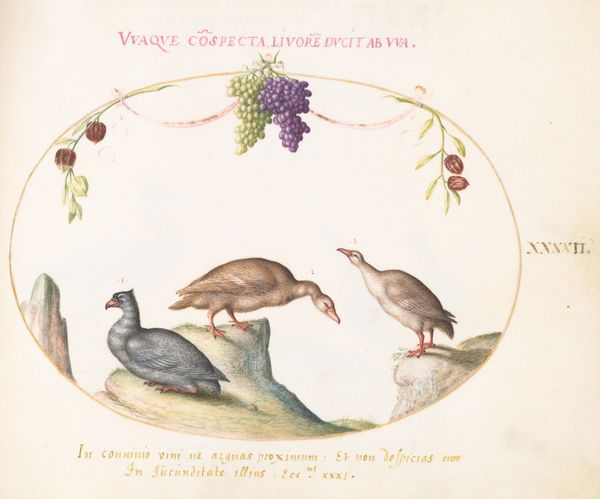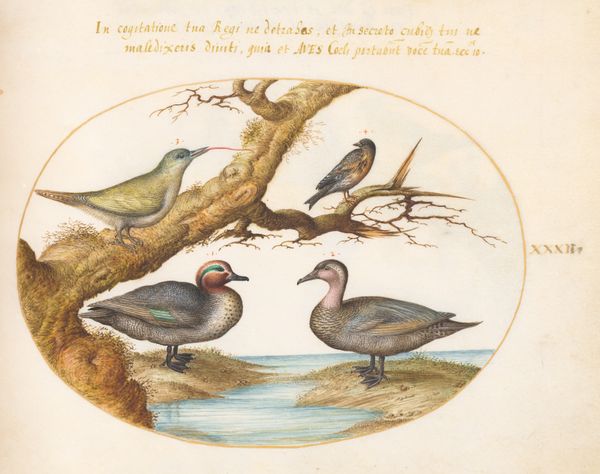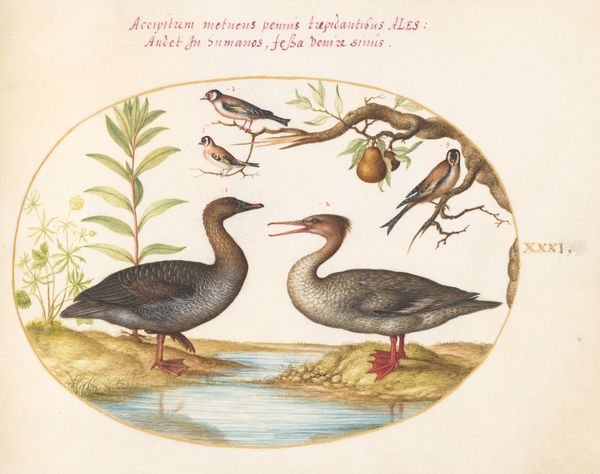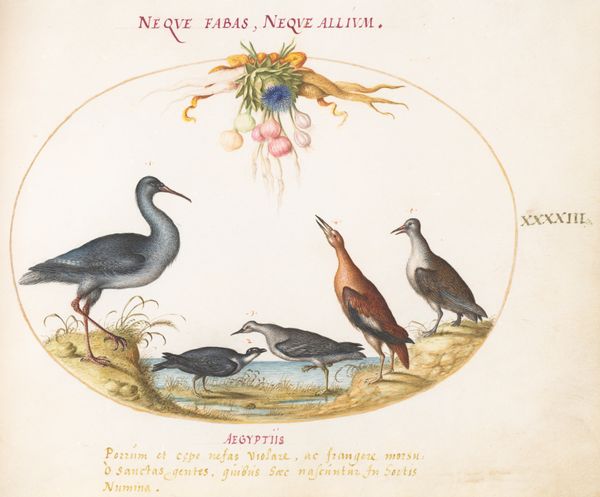
Plate 48: Wood Grouse, Rail, and Curlew with Hazelnuts and Figs c. 1575 - 1580
0:00
0:00
drawing, coloured-pencil, watercolor
#
drawing
#
coloured-pencil
#
water colours
#
mannerism
#
watercolor
#
coloured pencil
#
botanical drawing
#
botanical art
#
watercolor
Dimensions: page size (approximate): 14.3 x 18.4 cm (5 5/8 x 7 1/4 in.)
Copyright: National Gallery of Art: CC0 1.0
Curator: This intricate watercolor and colored-pencil drawing, titled "Plate 48: Wood Grouse, Rail, and Curlew with Hazelnuts and Figs," comes to us from the workshop of Joris Hoefnagel, dating roughly to 1575-1580. Editor: Oh, what a delicately arranged menagerie! I’m immediately struck by the almost whimsical composition; it feels like a little avian theatre, where the birds are the star performers. Curator: Indeed. Hoefnagel was a key figure in the Mannerist movement, renowned for his naturalistic studies. Works like this reflected the growing interest in the natural world amongst the wealthy merchant and aristocratic classes. These weren’t just pictures; they were statements about knowledge, collecting, and power. Editor: Power… absolutely. The way those birds are rendered is just captivating—like each feather has its own story to tell. The hazelnut and fig branches also hint at a narrative, an Eden before the fall where everything harmonizes. And their eyes... so much expressive power! Almost unsettling. Curator: Well, unsettling may stem from the context. Works like this served as scientific records, almost taxonomic classifications, in a period just before modern scientific methodology solidified. The Latin inscription also hints at scientific observation from the time period. Editor: Maybe I'm projecting. Regardless, I love how the limited palette – the browns, creams, greens, and a dab of sky blue – works magic. It gives it that sense of antique mystery but each specimen still pops. I imagine these were really treasured pieces at the time. Curator: Absolutely, prints of these pieces circulated, and his depictions had incredible influence on understanding the natural world at the time. They occupied this crucial juncture of natural history, art, and nascent scientific method. Editor: Hoefnagel captured nature with reverence. Today, as ecosystems teeter, that attentive observation is maybe something we need to emulate. It encourages that curiosity in natural life to bloom—I feel more inclined to just walk around and notice the avian theatre occurring everywhere around us! Curator: I'd agree. Even though they operated in a vastly different intellectual landscape, there's still something quite affecting about these glimpses into the Early Modern relationship to nature.
Comments
No comments
Be the first to comment and join the conversation on the ultimate creative platform.
